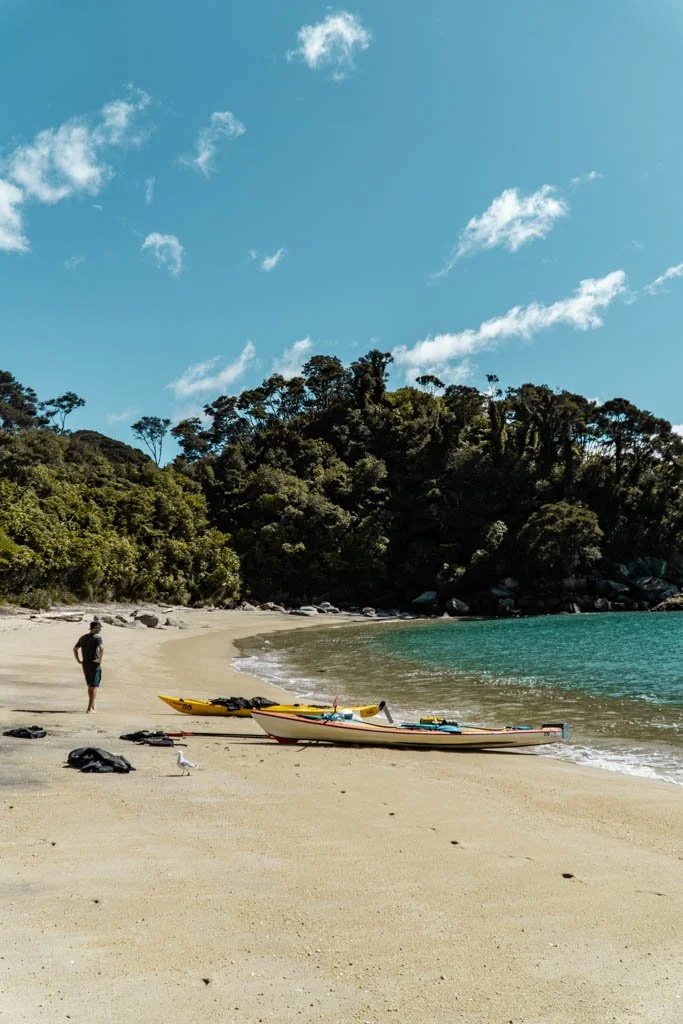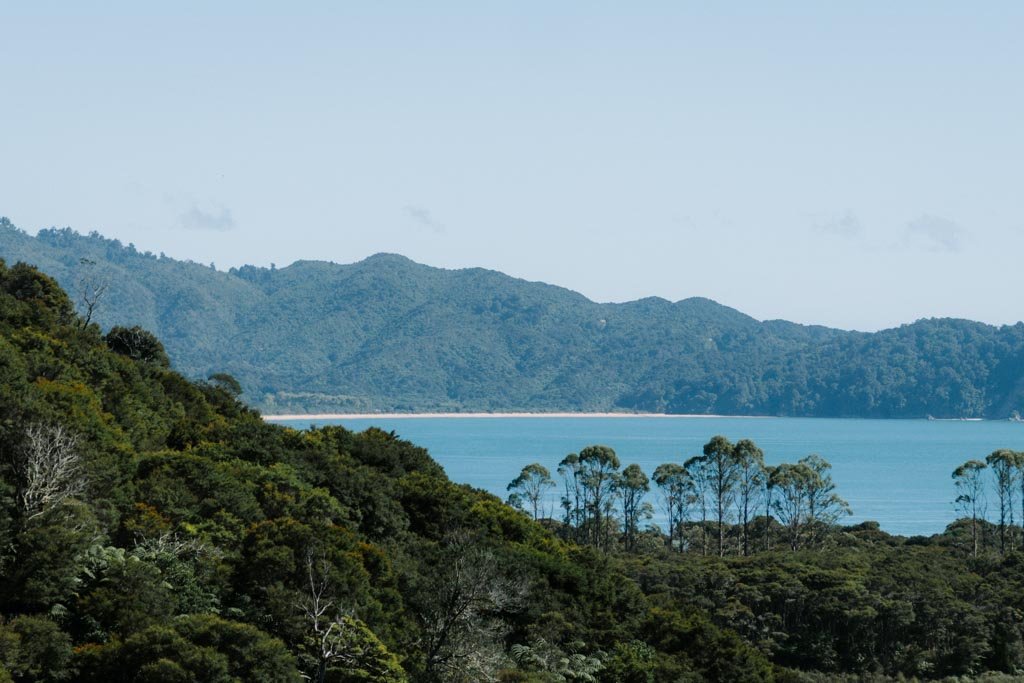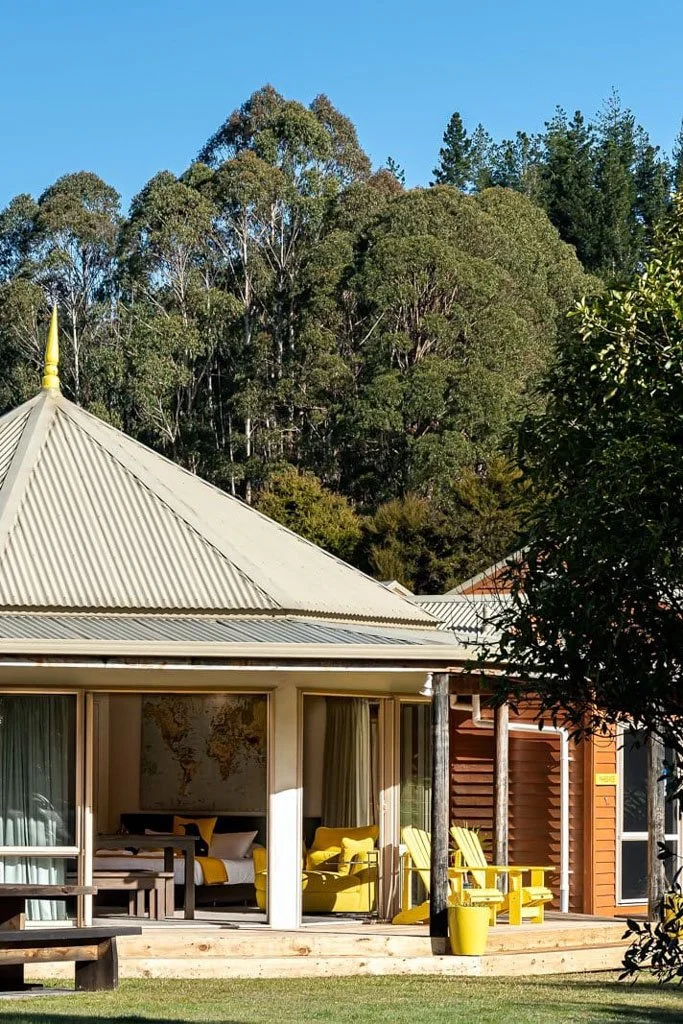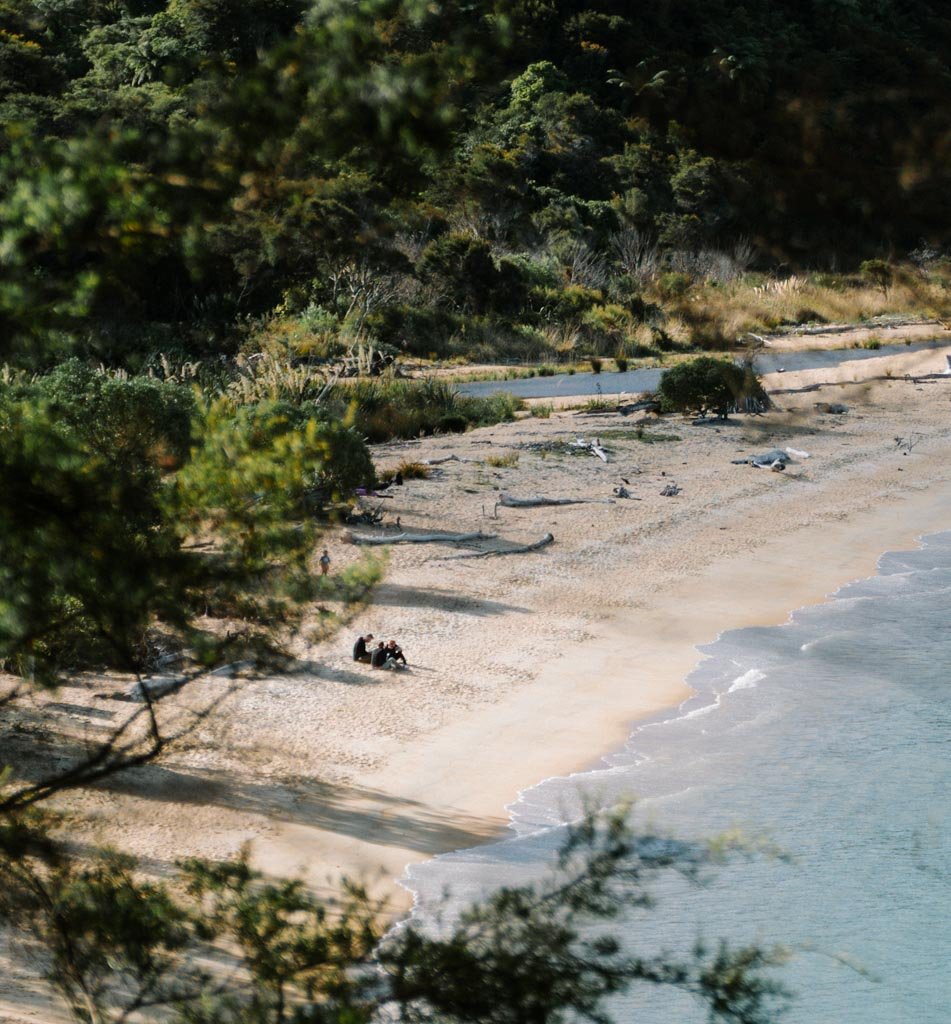Discovering Abel Tasman National Park: What to do in New Zealand’s coastal paradise
Abel Tasman is where you’ll find the best beaches in the South Island
At 22,500 hectares, Abel Tasman National Park is postage-stamp sized next to Fiordland, New Zealand’s largest national park spanning 1.2 million hectares.
But, like the old adage of good things coming in small packages, Abel Tasman delivers some of the best beaches, camping, kayaking, and coastal walking in New Zealand.
Access to the park is easiest from the southern end closest to Nelson. Both Marahau and Kaiteriteri are roughly one hour from Nelson; Marahau is little more than a village, but it’s located right at the entrance to the park. Kaiteriteri is larger and has more amenities, as well as a superb swimming beach, but it is busier than Marahau, particularly in the summer months.
Two nights in either Marahau or Kaiteriteri is enough to enjoy a full day of visiting Abel Tasman.
If you would prefer to escape the crowds, you can also explore Abel Tasman National Park from the northern end, via Golden Bay. Although a longer drive (and a hairy one at that, over the steep and switch-backed road across Takaka Hill) the campgrounds and tracks north of Totaranui are blissfully quiet. You also get the added bonus of exploring Golden Bay, a uniquely hippy part of New Zealand with stunning beaches and walks. It’s well worth spending three nights in the area.
If you’re up for a multi-day hiking and kayaking adventure, you can also take on the Abel Tasman Coast Track, one of New Zealand’s Great Walks.
I’ve visited Abel Tasman probably around six times (I’m losing count) hiking the coastal track, camping, kayaking, and going for day walks. Each time, I fall for the national park a little more. It really is one of the prettiest parts of the South Island.
I’ve gone in from the Nelson end and the Golden Bay end (and if pushed would say I prefer the end closer to Golden Bay) and have my favourite beaches, out of the many to choose from.
If you’re curious about exploring Abel Tasman, these are the best things to do in the park, and some of the tips and advice I’ve collected from my time there.
Abel Tasman National Park at a glance
WHY GO:
Abel Tasman National Park is home to some of the best beaches in New Zealand.
The park is spread along the very top of the South Island, encompassing golden bays and dense native forest. It’s this combination that makes it feel so special to me — there’s something magical about the forest coming all the way down to the water.
HOW MUCH TIME DO YOU NEED THERE:
You’ll need at least two nights in either Marahau or Kaiteriteri, to allow for a full day of exploring the national park.
If you have a bit more time, Abel Tasman is an ideal national park for an overnight wilderness adventure.
And if you’re really unhurried, it’s worth heading over to Golden Bay and exploring the northern end of the park as well.
FEATURED STAY
Abel Tasman Lodge
A sunny, friendly, small lodge located a few minutes walk from the start of the Abel Tasman track.
Day hikes in Abel Tasman
The Abel Tasman Coast track stretches for 60 kilometres (37 miles) from Marahau in the south to Wainui Bay in the north.
It takes three to five days to walk the entire track, depending on how much time you spend basking on the golden sand at bays along the way, or dipping in and out of the sublime water.
If you only have one day dedicated to exploring Abel Tasman, or simply don’t have all the gear required for a multi-day trek, you can easily walk in from the road ends at either Marahau or Wainui Bay. Within a couple of hours of either road end you can reach beaches and enjoy the coastal forest.
However, you’ll see more of the park if you choose to do a combination of walking and water taxi, organising to be picked up from and dropped off at either Marahau or Kaiteriteri.
In general, water taxi stops include Anchorage, Bark Bay, Onetahuti, Awaroa, and Totaranui, offering similar trips for similar prices.
Abel Tasman Kayaks operates a water taxi service out of Marahau (in conjunction with their kayak rentals)
Aqua Taxi runs from both Marahau and Kaiteriteri
Popular sections to tackle as day hikes include Bark Bay to Anchorage (3.5 hours), Torrent Bay to Bark Bay (2.5 hours), Bark Bay to Awaroa (3 hours) or Onetahuti to Awaroa (1 hour).
While the options might sound confusing, you really can’t go wrong – almost every section will feature at least one beach and coastal views along the way. If I had to choose, I would avoid Anchorage (as the busiest part of the park) and aim for one of the walks that finishes in Awaroa, where you can enjoy lunch at Awaroa Lodge. The Bark Bay to Awaroa stretch will take you past Tonga Quarry Beach, which is particularly lovely.
The only thing to keep in mind if you walk between Awaroa and Totaranui, or Bark Bay and Awaroa, is that the tides in Abel Tasman are enormous, up to 6m. Torrent and Bark
Bays have high tide options (although it’s much quicker and more fun to walk across the sand at low tide) but at Awaroa Bay you have no choice but to cross close at low tide.
There are a few tidal crossings along the Coast Track. Torrent Bay can be crossed 2 hours either side of low tide, although there is an all tide track around the estuary that also provides access to Cleopatra’s Pool, a bottle-green freshwater rockpool in the Torrent river.
Awaroa Inlet can only be crossed 1 hour 30 minutes before and 2 hours after low tide. It takes 25 minutes to walk right across the inlet. Take special note of this if you plan on walking this section of the track, as there is no alternative route around the estuary.
Another option for day hikes is to access Abel Tasman from Totaranui; it’s a long drive to reach the beach overland, via Golden Bay and then a narrow gravel road to the coast, but once there you have the option of exploring the track in both directions.
Walk north on the Headlands Track (1 hour loop) or go as far as Anapai Bay or Mutton Cove. Heading in the other direction, it’s 2.5 hours to reach Awaroa (although note the tidal crossing if you want to reach Awaroa).
Even wandering down to Goat Bay or Waiharakeke Bay is worthwhile;; the lookout at Skinner Point, at the southern end of Totaranui, is particularly worthwhile for views along the coast.
Totaranui campground is also an idyllic place to spend a couple of nights, so it’s an ideal destination if you’re travelling the area on an unhurried campervan trip.
On any day walks, go prepared with a day pack with sunscreen, swim suit, and towel, as you will no doubt want to jump in the water at some point. The coastal track is well signposted and well trodden; stay on the track and it’s impossible to get lost. You won’t need a topographic map to navigate, but the DOC description of each track section can come in handy. I like to use a topo app (NZ Topo50 Offline or AllTrails) to check distances and keep an eye on where I am, but it’s not essential.
Whatever you do, don’t feed any weka – the brown, chicken-sized birds scuttling in and out of the bushes along the track. They are very fast, and very good at stealing anything you leave lying around, so keep a close eye on your lunch.
Hiking the Abel Tasman Coast Track as a multi-day adventure
Although hiking the full length of the Abel Tasman Coast Track can take up to five days, the number of transport options and starting points mean you customise a multi day walk to suit you – whether that’s an overnight trip, a three day walk, or a combination of kayaking and hiking.
Most hikers start in Marahau in the south and only go as far as Totaranui in three days, but the track continues on to Wainui Bay. Water taxis from Marahau only go as far north as Totaranui, so continuing on to the end of the track at the Golden Bay end can be more challenging logistically. Trekexpress and Golden Bay Air run shuttles from Wainui Bay back to the track start at Marahau (and vice versa, if you walk in the opposite direction), although these generally only operate in summer. It’s a 1.5 hour return trip by road.
Huts and campsites along the Coast Track need to be booked year round. There are only four huts – Anchorage (34 beds), Bark Bay (34 beds), Awaroa (26 beds), and Whariwharangi (20 beds) – so bunks get booked up quickly. The huts have flush toilets, but no cooking facilities or lighting. There are 18 campsites along the trail; they are much easier to book, but facilities vary. The larger ones have flush toilets, but the smaller (and often more scenic) spots only have long drops. Some are water access only.
Kayaking and hiking Abel Tasman
Abel Tasman Kayaks has a good operation and flexibility – I completed a three day trip, with two days kayaking and one day hiking, with them. Our small group added on some camping gear, and an extra night camping in Totoranui, and they were very accommodating. Instruction and a safety briefing before departing.
All operators should provide instruction, camping equipment should you need it, and free parking. If you’re travelling solo, none of the operators will allow you to hire a kayak alone.
Where to stay in Abel Tasman National Park
You can access Abel Tasman from a couple of directions. Most visitors will enter the park from the southern end, closest to Nelson.
If you’re game for more adventure, I highly recommend going into Abel Tasman from the north. That region is Golden Bay, a remote and well off the beaten track destination that is one of my favourite parts of New Zealand.
In the park
Awaroa Lodge is the ultimate Abel Tasman experience.
I have never stayed here myself, but each time I have hiked past I have stopped for lunch and a coffee at the restaurant. It’s a bit of a treat to have a deluxe meal in the middle of the wilderness.
Marahau
This is the most popular starting point for the Abel Tasman Coast Track — the most popular route is from Marahau to Totaranui, from where most hikers catch a water taxi back to the start of the track.
The Barn Cabins & Camping is a nice campground right at the start of the coast track. I stayed in a dorm room here, even though I was travelling in my van at the time, as the price of a bed was basically the same as camping.
I shared the dorm with other interesting travellers, including a woman and her teenage son — I thought it was nice to see more than just backpackers.
Kaiteriteri
Golden Bay
Most people explore Abel Tasman National Park from Marahau, near Nelson.
Exploring Abel Tasman from Golden Bay
This means that the last section of the Abel Tasman track, from Totaranui to Wainui, gets much fewer visitors.
This is my favourite part of Abel Tasman. The small campgrounds are more peaceful. I spent several nights camping in Mutton Cove and enjoyed walking sections of the Abel Tasman track from there.
It’s only a 2 hour walk from the Wainui carpark at the Golden Bay end of the track to Whariwharangi Bay, where there’s a historic DOC hut for overnight stays.
You can also easily do this walk as a day hike,
Tākaka, the main town in Golden Bay, has an artistic, bohemian vibe.
Along the main street you’ll find art galleries, small shops selling locally crafted jewellery and ceramics, and hippie clothing stores.
Te Waikoropupū Springs discharge 14,000 litres of water per second, making this the largest freshwater spring in New Zealand.
The bright blue water bubbling out of the ground is some of clearest water in the whole country.
At Paine’s (or Payne’s) Ford the river is a pristine bottle green, flowing between limestone bluffs in a remnant patch of forest.
The rocks around here form jagged islands in the middle of the river. You can climb up onto them for better views of the water below.
Wharariki Beach is a remote beach on the northwestern tip of the South Island.
To reach the beach, you have to walk for 25 minutes across farmland, before emerging into the dunes.
Wharariki is famous for its epic sunsets, as a west facing beach, and for the drama of the Archway Islands jutting up from the waves just off the coast.
At sunset, these islands are silhouetted by the sun.
The beach itself is a huge expanse of sand, so you can spend several hours walking around here and admiring the scenery and looking for seals.
It’s not a safe swimming beach, and it’s often windy so not ideal for picnics, but you won’t be disappointed by a sunset walk out here.
The Historic Langford Store & Post Office is a little slice of history in Golden Bay.
The store has been open since 1928 and it lovingly pays homage to days gone by. Inside the store are shelves lined with retro and vintage homewares, along with treats like classic lollies and homemade jams.
Green-lipped mussels are an essential New Zealand delicacy, and one of the best places to try them is at the iconic Mussel Inn in Golden Bay.
The Mussel Inn was established 30 years ago, with a single-minded vision — the goal of creating a welcoming space for people to gather and enjoy good food and good music.
Today, The Mussel Inn is a stalwart of Golden Bay. Swinging by for a meal and music is one of the best things to do in Golden Bay, and a surefire way to experience local culture.
The pub is simple but cosy, the menu simple but delicious.
Feast on mussels and garlic bread, or enjoy dishes made with vegetables grown in their own garden, while you soak up the atmosphere and make plans to move to Golden Bay.
The first time I heard about Golden Bay was at a house party in Auckland.
A friend of a friend was visiting from Nelson — he had long hair and baggy pants, crude tattoos and disarming charm. Drawn to his novelty, we clustered around him and listened awed as he talked about the magical land of Golden Bay.
First, he said, you journey over a hill. The expansive views as you crest this hill smack you in the face and leave your jaw hanging open.
Then you’ll drive down into the lush lowlands of the area, he went on.
There’s a town full of art, and communes where hippies live in houses cobbled together from reclaimed wood and clay. There are rivers of water clearer than anything you’ve ever seen before, and people are barefoot, sometimes topless, always free.
His rhapsodising sold me. I went to Golden Bay and it was everything that was promised to me. I went back again a year later, and again after that.
Now I’m the one who talks about Golden Bay at parties, telling people about the crescent beaches and rolling hills interspersed with small towns where artistanal products and local creatives are celebrated.
Golden Bay is well worth visiting for incredible beaches, short coastal walks, and a bohemian, hippy vibe in Tākaka. Close to Nelson, Golden Bay is a great place to get off the beaten track while still seeing some of the South Island’s incredible natural highlights.
Itineraries that pass by Abel Tasman National Park
You can visit Abel Tasman even if you only have around 10 days in the South Island. If you would like help planning your itinerary, take a look at my itinerary planning service.
Thanks for reading this far. I hope this helped you plan your visit to Abel Tasman. If you enjoyed my recommendations, you might also like these articles:




